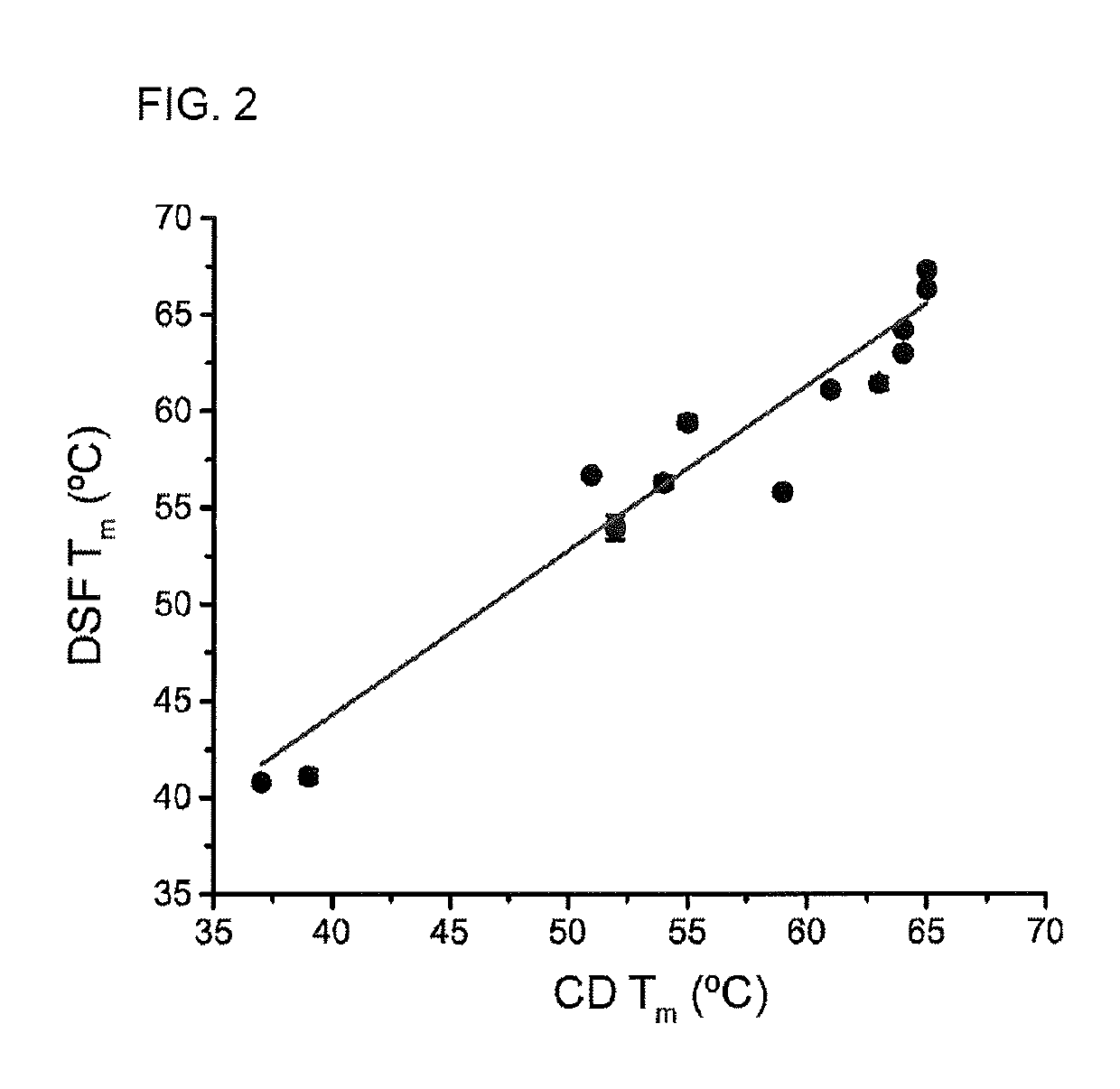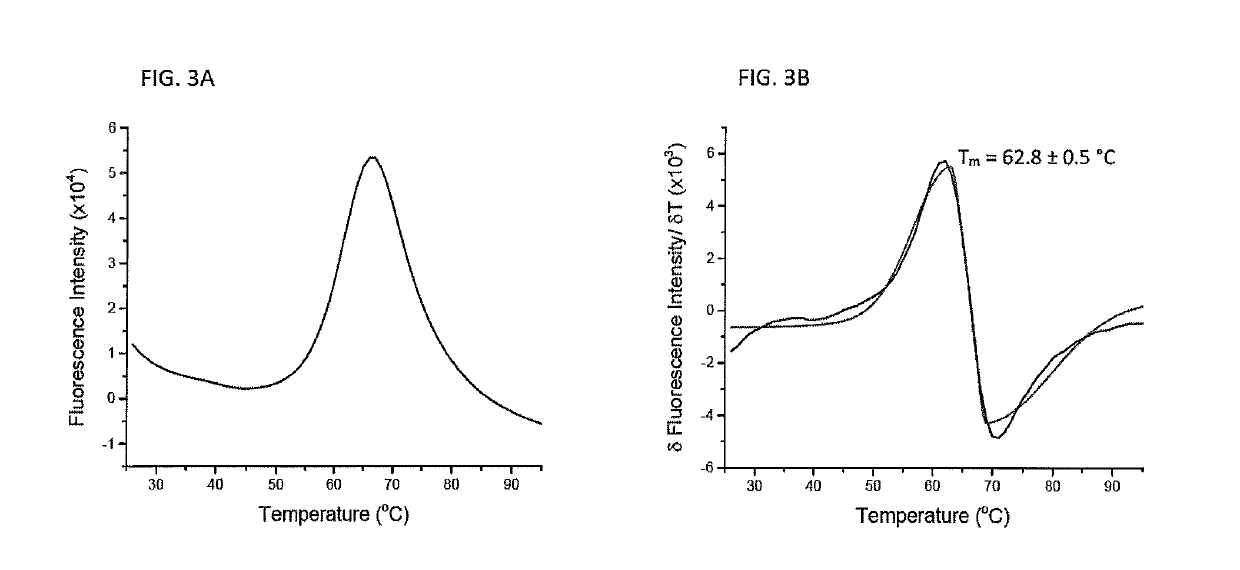Protein folding and methods of using same
a protein and protein technology, applied in the field of structural immunology and protein chemistry, can solve the problems of low yield of recombinant proteins in cell-free systems, and high cost of these systems for industrial-scale or high-throughput protein production, and achieve the effect of efficient and rapid production of a preparation and difficult folding
- Summary
- Abstract
- Description
- Claims
- Application Information
AI Technical Summary
Benefits of technology
Problems solved by technology
Method used
Image
Examples
example 1
Materials and Methods: Protein Folding, Fluorimetry, and Spectroscopy
[0056]In this example, protein complexes including recombinant MHC-HC HLA-A2, β2m protein, and an MHC-binding peptide were used. In their native state, these three proteins form a complex protein.
[0057]Recombinant MHC-HC HLA-A2 and b2m protein were expressed as inclusion bodies in Escherichia coli. These inclusion bodies were solubilized by exposure to a denaturing agent and a reducing agent. The sequence of b2m included a C-terminal hexahistidine tag. Peptides that may be used in this process include any peptide that binds to class I MHC. These peptides may be synthesized chemically, purified to greater than 95%, and verified by mass spectrometry. An exemplary list of these peptides include the Tax peptide (epitope ID 37257 in the Immune Epitope Database), the MART-1 decamer peptide (epitope ID 10987 in the Immune Epitope Database), or any previously identified or novel antigenic peptide or peptide variant associa...
example 2
Comparison of Differential Scanning Fluorimetry (DSF) and Circular Dichroism (CD)
[0063]Quantifying the strength of the interactions between peptides and major histocompatibility complex (MHC) proteins is important in the identification of T cell epitopes and evaluating the consequences of naturally occurring or engineered peptide modifications (Trolle, Metushi et al. 2015). For most class I MHC proteins, the significant instability of the peptide-free “empty” protein has hindered direct measurements of peptide-MHC binding equilibrium constants.
[0064]Measurements of peptide-MHC thermal stability is used as a proxy for peptide binding affinity. Measurements of peptide-MHC thermal stability have been used as a standard, with circular dichroism (CD) spectroscopy being the most frequent mode of detection (Morgan, Holton et al. 1997). CD is used to monitor the loss of alpha-helical character in the peptide binding domain as the complex dissociates and unfolds.
[0065]A drawback of CD-monito...
example 3
Analysis of β2m Protein Produced by Microscale Protein Folding
[0069]To verify that the microscale protein folding method is useful for producing proteins other than class I peptide / MHC complexes, the microscale folding reaction described in Example 1 was modified to produce only the protein β2m. Purified β2m was denatured in 6 M guanidine-HCl solution to a final concentration of 500 micromolar and heated to 37° C. for 30 minutes. Microscale folding was performed in a volume of 100 microliters with constant stirring, adding denatured β2m to yield a protein concentration of 12.5 micromolar. The reaction was then stirred for 12 hours at 4° C. Microdialysis was then performed against a high molecular weight cutoff membrane, such as a 7 kilodalton molecular weight cutoff membrane at room temperature for 2 hours with the buffer exchanged every 30 minutes. A second round of dialysis was used to exchange the folded β2m into the final buffer for 2 hours at 4° C. with constant stirring and bu...
PUM
| Property | Measurement | Unit |
|---|---|---|
| temperature | aaaaa | aaaaa |
| temperature | aaaaa | aaaaa |
| volume | aaaaa | aaaaa |
Abstract
Description
Claims
Application Information
 Login to View More
Login to View More - R&D
- Intellectual Property
- Life Sciences
- Materials
- Tech Scout
- Unparalleled Data Quality
- Higher Quality Content
- 60% Fewer Hallucinations
Browse by: Latest US Patents, China's latest patents, Technical Efficacy Thesaurus, Application Domain, Technology Topic, Popular Technical Reports.
© 2025 PatSnap. All rights reserved.Legal|Privacy policy|Modern Slavery Act Transparency Statement|Sitemap|About US| Contact US: help@patsnap.com



